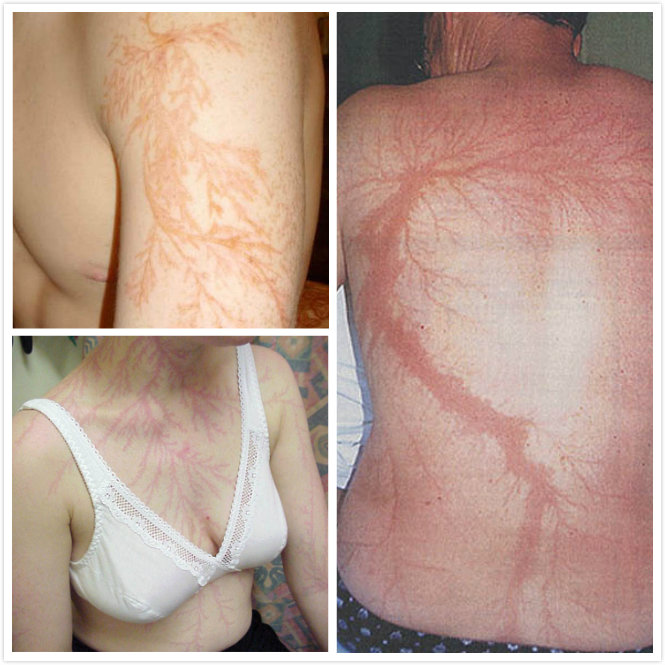


Getting struck by lightning is quite an unusual occurrence. The statistics show that the chance of being struck by lightning in a lifetime is 1 out of 12000. Even with this small chance, about 90% of lightning victims survive to tell their tale. Lightning travels at tremendous speed to the earth and is thought to carry more power than that of a nuclear reactor. Imagine having that magnitude of power striking your body and still living to recount your experience!
Characteristic lightning scars on the body are called the Lichtenberg scar. The name Lichtenberg was given to this type of pattern after the German physicist Georg Christoph Lichtenberg discovered and studied them in 1777. Scars created by a lightning strike have characteristic scarring which is paradoxically quite beautiful considering the destructive force that created it and the threat it poses to life. Once struck by a bolt of lightning, the electrical energy in the current has to leave the body to reach the earth. This means the victim will have entry and exit wounds.

The lightning scars on body may be caused by blood vessels bursting as the current travels through the body, heats up and subsequently destroys the affected blood vessels. This distinguishing pattern is also seen on the surfaces or interior of insulating materials after electrical current discharges on or in the insulating material. The pattern created is also referred to as a fractal pattern. It resembles the fine, intricate branching of a fern or crystallization process.
The speed at which the lightning courses through a human body is a mere 3 milliseconds. Depending upon how and where the lightning strikes, damage can be extreme like death, or only partial if the lightning entered and exited, affecting only a small part of the body.
These wounds will be in addition to the usual third degree burns. Some victims have hair and clothes that become singed. The three milliseconds it takes to be struck by a bolt of lightning will deliver intense pain as the force of the electrical current sears through your body. Any metal objects on the body, like jewelry, will conduct this current and become superheated causing burns to the skin, leaving lightning scars on body. If the feet are the exit point, shoes may be blown off by the force.
The force of the electricity passing through the body has the potential to cause the heart to stop beating and death. The lightning may affect the normal electrical impulses regulating heartbeat.
The muscles of the respiratory system can become paralyzed, causing a lack of oxygen to the brain. Brain damage may also occur if struck on the head. Permanent paralysis or areas of numbness can also be the result.
Some people experience muscle twitches that can resemble symptoms of Parkinson's disease. This is due to neural damage. Other neural consequences of a lightning strike are impaired reflexes, memory inconsistencies, depression, anxiety, dementia. Some victims suffer from shattered eardrums.
Although the lightning scars on body look amazing, being struck is very dangerous. If you find someone having been struck, remain calm and follow the measures below: